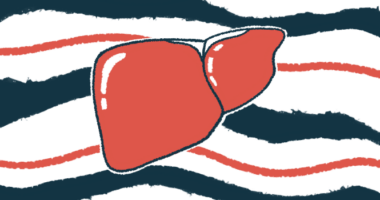Gut microbiota may be noninvasive diagnostic tool in biliary atresia
Ratio of Klebsiella to Bifidobacterium separated patients, healthy infants

The composition of microbes is altered in the intestines of infants with biliary atresia, a type of liver disease that affects the bile ducts, a new study finds.
In particular, the ratio of Klebsiella to Bifidobacterium, two types of gut bacteria, significantly distinguished patients from healthy infants.
“Our results could provide [a] potential noninvasive biomarker for identification of biliary atresia,” the researchers wrote in “Alterations of gut microbiota in infants with biliary atresia identified by 16S rRNA-sequencing,” in BMC Pediatrics.
Biliary atresia, a liver disease that affects infants, is characterized by blocked or absent bile ducts outside the liver. Bile ducts transport bile, a digestive fluid, from the liver to the small intestines. The bile duct abnormalities that mark biliary atresia can lead to liver damage and leakage of bile into the bloodstream.
The condition is mainly diagnosed via an invasive surgical procedure called a cholangiogram, wherein a dye is injected into the gallbladder so an X-ray scan can show whether bile is flowing in bile ducts as it should.
Emerging evidence suggests infants with biliary atresia have dysbiosis, or an altered composition of the microbes in the intestines, also called gut microbiota.
Here, researchers at the Guangzhou Medical University, China analyzed fecal samples from 31 infants, ages 39 days to 3.5 months, with biliary atresia and 20 age- and sex-matched healthy infants to see if these differences could serve as a noninvasive diagnostic tool. The healthy infants served as a control group. A standard technique called 16S ribosomal RNA gene sequencing was carried out to identify the composition and diversity of gut microbiota in the samples.
Gut bacteria of healthy infants, infants with biliary atresia
“Characterization of gut [microbiota] profiles in infants with biliary atresia can provide valuable information and potential disease biomarkers,” the scientists wrote.
Differences between patients and healthy controls were found in terms of bacterial phyla, the major lineages of bacteria. The abundance of the Firmicutes and Fusobacteria phyla was significantly higher, while that of Actinobacteria was lower in biliary atresia patients over controls.
When looking more closely at the genus level, which comprises groups of closely related bacterial species and strains, the researchers found that the Streptococcus, Klebsiella, and Veillonella genera were more abundant in biliary atresia patients than in healthy controls. At the same time, patients had far fewer bacteria of the genera Bifidobacterium, Ruminococcus, and Rothia.
Notably, the ratio of Klebsiella to Bifidobacterium abundance was significantly higher in infants with biliary atresia than in healthy infants.
Differences in bacterial genera let atresia patients be isolated from healthy controls with an accuracy of 78.7%, with the major predictive power dependent on the abundance of the genera Klebsiella, Rothia, and Bifidobacterium.
“These findings pointed to the possibility to develop accurate biomarkers to help prevention and clinical management of [biliary atresia],” the researchers wrote.
Lastly, an analysis of biological function pathways related to the gut microbes present differently in patients and controls showed the microbes were mainly involved in metabolizing fatty molecules and vitamins.
This indicated that “microbiome dysbiosis was involved in the [fat] and vitamins metabolism in affected infants,” the researchers wrote.
“This study makes the case that alterations of gut microbiota are associated with the incidence of biliary atresia,” wrote the scientists, who said Klebsiella/Bifidobacterium could be a biomarker for identifying biliary atresia. “The specific interaction of the gut microbiome dysbiosis and biliary atresia should be validated in further prospective [over-time] studies on large [groups]” from different parts of the world.







